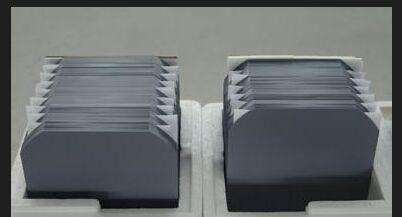After the silicon wafer is processed by different processes such as slicing, chamfering, grinding, surface treatment, polishing, and epitaxy, the surface has been seriously stained. The purpose of cleaning the Si wafer is to remove particles, metal ions and organic substances on the surface of the silicon wafer.
![]()
Wet cleaning uses chemical solvents with strong corrosive and oxidizing properties, such as H2SO4, H2O2, DHF, NH3•H2O, etc. The impurity particles on the surface of the silicon wafer react with the solvent to form soluble substances and gases. In order to improve the cleaning effect, it is possible to use mega-acoustic, heating, vacuum and other technical means, and finally use ultra-pure water to clean the surface of the silicon wafer to obtain a silicon wafer that meets the cleanliness requirements.
There are several methods for wet cleaning the silicon semiconductor wafer:
RCA Cleaning for Silicon Wafer
Kern et al. proposed the RCA cleaning method in 1965. According to the SPM, DHF, SC-1, and SC-2 sequences, the RCA cleaning method basically satisfies the requirements of most wafer cleanliness. Cleaning the silicon wafers by this method not only improves the cleaning efficiency, reduces the cost, saves time, obtains excellent surface cleanliness, but also improves the electrochemical performance of the Si wafer.
Ultrasonic Cleaning for Silicon Wafer
Ultrasonic cleaning is a cleaning method widely used in the semiconductor industry. The method has the advantages of good cleaning effect, simple operation, and can be removed for complicated devices and containers; but the method also has the disadvantages of high noise and easy breakage of the transducer.
This method can effectively remove organic, particulate, and metal ion impurities on the surface of the silicon wafer by utilizing the mechanical action of high-frequency sound waves, the cavitation effect of the solution, and the complexation reaction of chemical reagents. Using a similar method, BongKyun et al. used a 0.83 MHz megasonic wave to clean the silicon wafer, which is more excellent and can remove particulate impurities below 0.3 μm.

Double Flow Spray for Silicon Wafer
The dual-flow atomizing nozzle cleans the silicon wafer by using a nozzle to scan the silicon wafer back and forth with the rotating arm, and the silicon wafer rotates clockwise. The dual-flow nozzle uses a high-pressure, high-speed jet of gas to impinge a vulgar flow of liquid, destroying the surface tension of the liquid and the van der Waals bond and hydrogen bond between the liquid molecules, causing the liquid to atomize and become nanometer-sized droplets, which are ejected at high speed through the nozzle under the action of high pressure air.
Ozone Microbubble Method for Silicon Wafer
The high activity and strong oxidizing properties of ozone can remove organic and particulate impurities on the surface of the Si wafers. Ozone is dissolved in water to form a highly reactive OH group, and the OH group chemically reacts with the organic substance to remove organic impurities on the surface of the silicon semiconductor wafer. At the same time, the surface of the silicon product is covered with an atomic-level smooth oxide film, which effectively isolates the re-adsorption of impurities.
This method has an excellent cleaning effect, basically removes organic and particulate impurities, and meets the requirements of general silicon wafer cleanliness. At the same time, ozone microbubble cleaning produces less polluting waste and high cleaning efficiency, and can be used for cleaning large-scale circuits, silicon wafers and LEDs.
For more information, please visit https://www.sputtertargets.net/.
